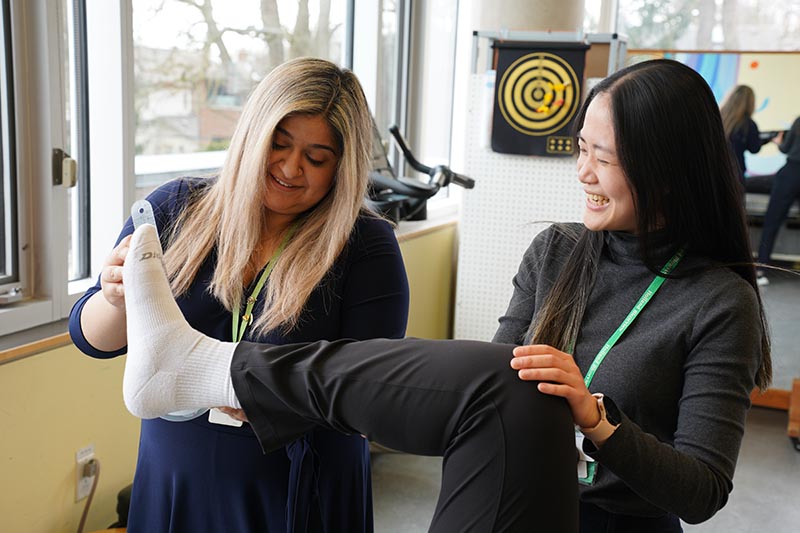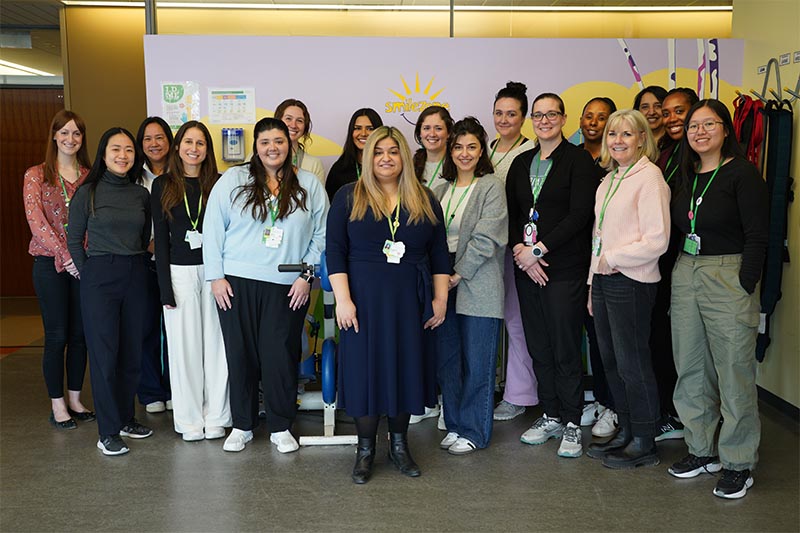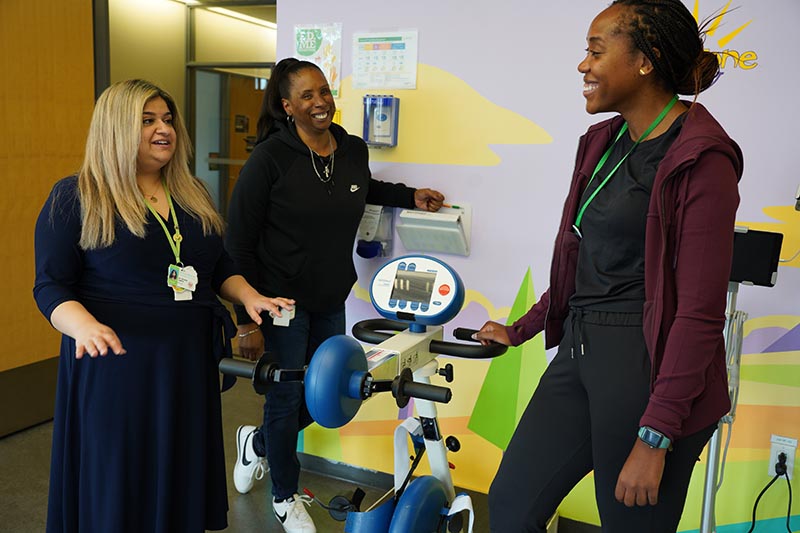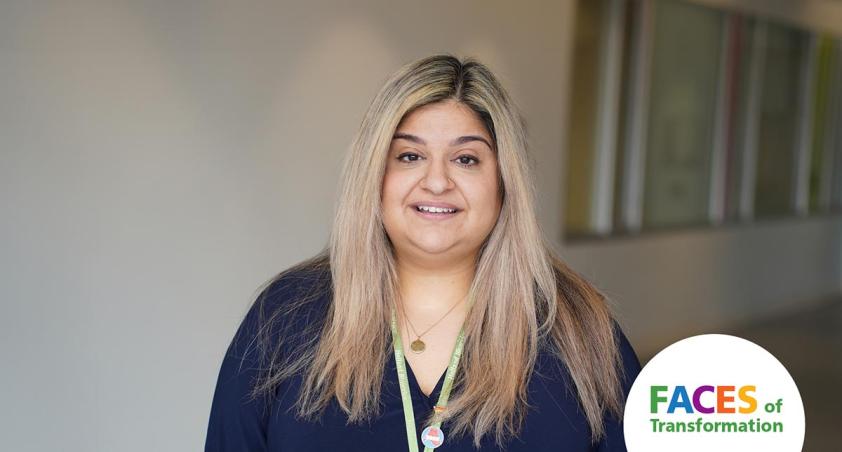For Dr. Alysha Ladha, joining Holland Bloorview felt like a natural next step. She first arrived in 2013 during her subspecialty residency and was drawn to the field of pediatric acquired brain injury. Over time, her connection to the hospital, and to the brain injury rehabilitation team (BIRT), grew stronger.
“Working at Holland Bloorview and in the field of acquired brain injury, I get to see such a breadth of clients and support them in different ways. I get to work in inpatient and outpatient roles and be truly integrated into multiple multidisciplinary teams.”
Now a full-time developmental pediatrician, Dr. Ladha’s days are full of variety. Watch this video to hear firsthand why she loves working at Holland Bloorview:
Read on to learn more about Dr. Ladha:
What does a typical day look like for you?
Every day is a bit different, which is something I enjoy. I could be seeing clients and checking in on their medical concerns or connecting with acute care teams to coordinate care. I also attend rounds, family team meetings and education sessions. Some days I have clinic, where I see clients who were previously admitted and are now at home, or those dealing with concussions or mild traumatic brain injuries who experience challenges with returning to school or daily activities.
I’m also involved in teaching, attending committee meetings and working on various projects. There’s always something meaningful to do.
What are some of the major challenges families face when navigating developmental care?

Barriers to equitable care are becoming more recognized, so I am really happy that we are investing in a learning health system at Holland Bloorview. It enables us to understand ways to provide the most meaningful care for families with the resources we have and build cases for where clients and families need more support.
Many clients identify as having an invisible disability, like an acquired brain injury, that does not meet criteria for certain supports. Sometimes, these diagnoses exclude them from services they could benefit from, making it exhausting for families to navigate the system. As a physician, I hold a lot of privilege and often act as an advocate, amplifying the voices of children, youth, and families.
What innovative approaches or initiatives are you involved in to provide care that’s agile for children and their families?

While daily tasks are important, incorporating activities that make a person's eyes light up is crucial in any client care plan. In my clinical work, I take a holistic approach to client care, helping clients and families engage in activities that are meaningful to them. This could include spending time together as a family, going on outings with friends, playing musical instruments, participating in sports, or visiting the Snoezelen room. As a physician, my role is to often to help identify how children, youth and families can be involved in meaningful activities that are medically safe. Sometimes we explore new passions, which also takes agility and is rewarding in its own way.
In my non-clinical work, I am leading a project that is changing how inpatient physicians are scheduled on the wards to allow for more flexibility around when they are available to clients. This project also aims to protect some time for physicians to work on various projects in research, quality improvement and education – all things that can contribute to agile care across the hospital.

Can you share a memorable moment or success story that illustrates the impact your work has had on a client(s’) lives?
While it isn't a specific event, I often get asked about travel by clients with acquired brain injuries and their families. This can range from visiting a family member 30 minutes away to international travel. I have assisted families with medical letters for air travel, logistics around medications, insurance and service provision.
There can be ups and downs, but usually, it's a positive experience. It's exciting when families share how their trips went, often with pictures. It's not just about the travel; it's about building confidence in clients and their families, especially after experiencing something that turned their lives upside down. The empowerment they gain from these successes transfers to other life experiences, which is incredibly rewarding to see.
You are also actively involved with IDEAA (inclusion, diversity, equity, accessibility, anti-racism) initiatives. Can you tell us about that and what this means to you?
I am currently the IDEAA representative for the division of developmental pediatrics. This involvement has allowed me to reflect on my identity as a racialized woman who also holds privilege in multiple areas, influencing how I approach my roles at work and outside of work.
IDEAA has taught me that I am on a continuous learning journey and need to accept that I will make mistakes along the way, as I learn. However, I can learn AND act, to facilitate brave, safe spaces, advocate with my own voice, be an ally, amplify other voices when appropriate and support our mutual learning.

What has been the most rewarding part of your work?
Being able to build awareness about pediatric acquired brain injury. This happens in a lot of ways – through conversations with clients and families about their journeys, through teaching, presentations, connecting with schools and community organizations. I’m hoping to expand the avenues in the future to continue raising awareness.
Do you have any hobbies or passions outside of work that you’d like to share?
I sing in the Toronto Mendelssohn choir. I love it. It helps me use my brain differently, boosts my confidence and allows me to meet new people and learn from them. We're performing Duruflé's Requiem on May 9. Even if you can't attend, I recommend listening to it on YouTube; it's beautiful.
Learn more about our brain injury program
